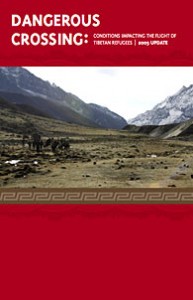Political developments linked to the increasing influence of China on Nepal and shifts in the balance of power in the Himalayan kingdom transformed the situation for Tibetan refugees in 2005. The risks for Tibetans transiting through Nepal increased dramatically over the year with the notice to close the office of the Dalai Lama’s representative in Kathmandu and the Tibetan Refugee Welfare Office, both critical for the security and welfare of Tibetan exiles in Nepal. The closures took place in the context of King Gyanendra’s seizure of power in February 2005 and the ongoing Maoist insurgency in Nepal, which has claimed more than 13,000 lives.
Between 2,000 and 3,000 Tibetans make the dangerous crossing through the Himalayas via Nepal to India each year, seeking refuge after repression in Tibet, or simply to be in the presence of the Dalai Lama. Often novice monks and nuns are seeking a religious education that is not possible in Tibet due to the restrictions imposed by the Chinese state, or hopeful parents are sending their children to study in Tibetan exile schools, feeling that it is their only chance for a reasonable education. Others leave because they have been relocated from their land to make way for development projects such as the Golmud-Lhasa railway or a new mine, or as a result of intensified urbanization in Tibetan areas. Some of the reasons for their departure are explored in this report, based on field research in Nepal and India and monitoring of the socio-economic and political situation in Tibetan areas of the People’s Republic of China…
If you wish to purchase this report, you can do so here »


